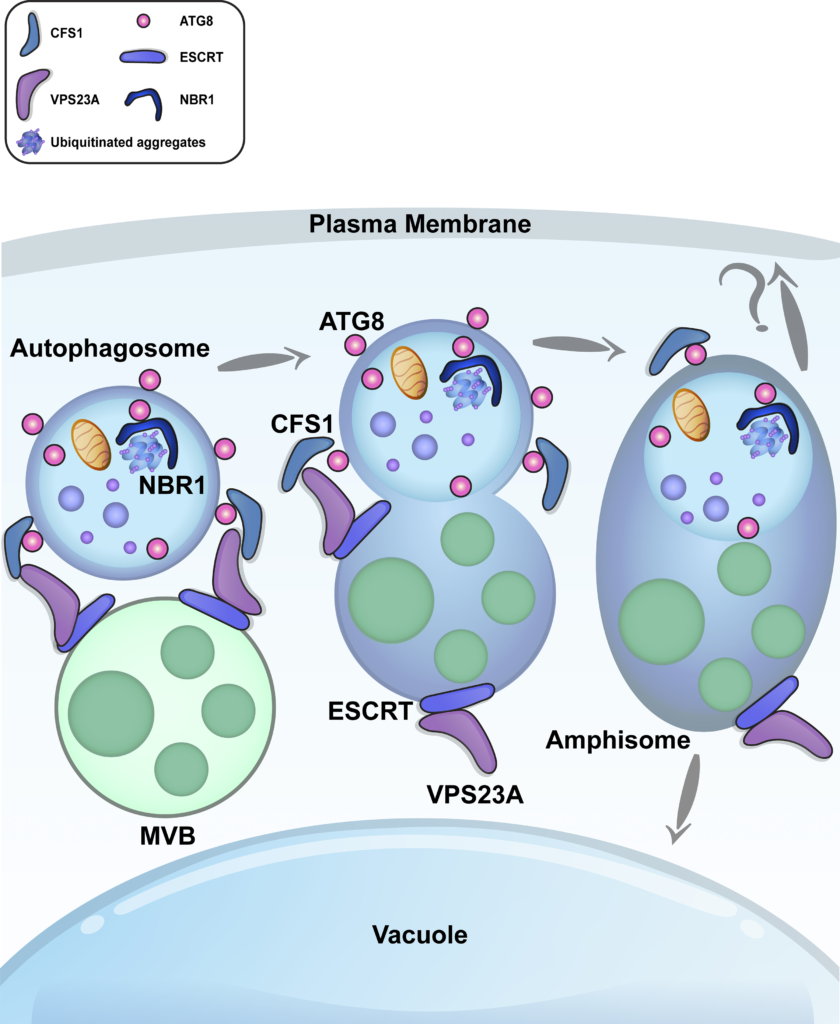October 21, 2022
Plant autophagosomes mature into amphisomes prior to their delivery to the central vacuole
Researchers in the lab of Yasin Dagdas at the GMI and their collaborators reveal a “hub and spoke” distribution model used by plant cells to regulate autophagic flux and thus efficiently coordinate cellular recycling. Their work has been published in the Journal of Cell Biology.
Cells make use of specialized vesicles, the autophagosome, to recycle unwanted or harmful cellular compartments. These double-membrane organelles are created de novo by the cells to engulf the unwanted molecules and carry them, in case of plant cells, to the vacuole where they are degraded. Autophagosomes need to undergo a maturation process to fulfil their delivery to the final destination. In plants, not much has been known about this maturation path of the autophagosomes, i.e. their delivery and fusion with the vacuole.
In this study, the authors show that autophagosomes first fuse with other endosomal organelles called multivesicular bodies (MVBs) to form so-called “amphisomes”, which in turn fuse with the vacuole. They identified the autophagy adaptor CSF1 to be central to this pathway as it bridges autophagosomes with components of the multivesicular bodies. Altogether, their findings suggest that vacuolar trafficking is organized as a “hub and spoke” type distribution system, where amphisomes function as cellular sorting hubs for multivesicular bodies and autophagosomes.
Read more in the GMI news here.
Publication:
Jierui Zhao, Mai Thu Bui, Juncai Ma, Fabian Künzl, Lorenzo Picchianti, Juan Carlos De La Concepcion, Yixuan Chen, Sofia Petsangouraki, Azadeh Mohseni, Marta García-Leon, Marta Salas Gomez, Caterina Giannini, Dubois Gwennogan, Roksolana Kobylinska, Marion Clavel, Swen Schellmann, Yvon Jaillais, Jiri Friml, Byung-Ho Kang, Yasin Dagdas:
Plant autophagosomes mature into amphisomes prior to their delivery to the central vacuole .
Journal of Cell Biology. 2022 October 19.
DOI: 10.1083/jcb.202203139

Current working model. © Zhao et al., J. Cell Biol. (2022), Rockefeller University Press. https://doi.org/10.1083/jcb.202203139